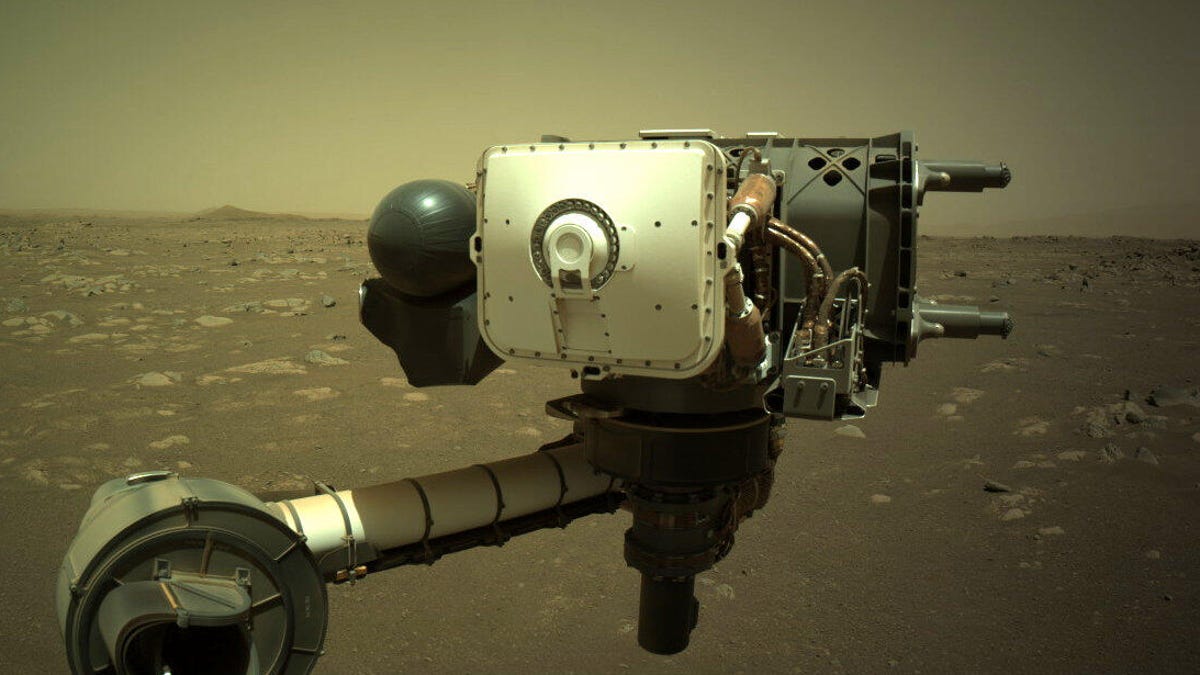NASA Rover Helps Scientists Figure Out Why Mars Is So Crazy Hazy
Dust in the wind.

This view shows the end of the Perseverance rover's arm as it surveys the hazy Jezero Crater.
If you enjoy clear skies, then don't put Mars on your list of vacation destinations. The NASA Perseverance rover's unique set of instruments is helping scientists better understand why the red planet is so hazy. It seems wind gusts and dust devils are major culprits in feeding the Martian miasma.
Atmospheric scientist Claire Newman of Aeolis Research is a member of the Perseverance science team and the lead author of a study published Wednesday in the journal Science Advances. The paper investigates the rover's discoveries in the Jezero Crater and how wind gusts and whirlwinds push dust and sand from the Martian surface into the air.
Perseverance has spotted dust devils with its cameras (this was a particularly nice one), but the research team also used data from the rover's microphones and its Mars Environmental Dynamics Analyzer, an instrument that monitors weather and dust conditions. MEDA tracks humidity, radiation, dust, wind and air temperature, giving a full picture of the weather in Jezero and what happens when a dust devil passes by the rover.
The rover is showing that Jezero is one of the most active areas for vortices (whirling air patterns) yet explored on Mars. It's not just devils whipping dust around. The rover also observed powerful wind gusts lofting dust upward. "One such event covered 10 times more area than the largest dust devil, suggesting that dust devils and wind gusts could raise equal amounts of dust under nonstorm conditions," the study said.
Mars is still maintaining some mystery when it comes to dust and winds. NASA's InSight lander is located in a different part of Mars from Perseverance. InSight's solar panels are caked with so much dust that the mission is expected to end this year, but the lander hasn't seen the kind of dust devils that are active in Jezero. NASA had been hoping a whirlwind would come along to clean InSight's panels off, but that hasn't happened.
Dust aloft on Mars has been an issue for solar-powered robotic explorers. A global dust storm brought the NASA Opportunity rover mission to an end, and China's Zhurong rover went into a dormant mode this month under dusty conditions.
The Perseverance data is contributing to an understanding of how winds work on Mars and what conditions encourage dust uplift. The research team is calling for further observations and study that will shed light on why Jezero is such a hotspot for dusty wind activity. It seems Jezero is doing its fair share of work in keeping Mars hazy.

